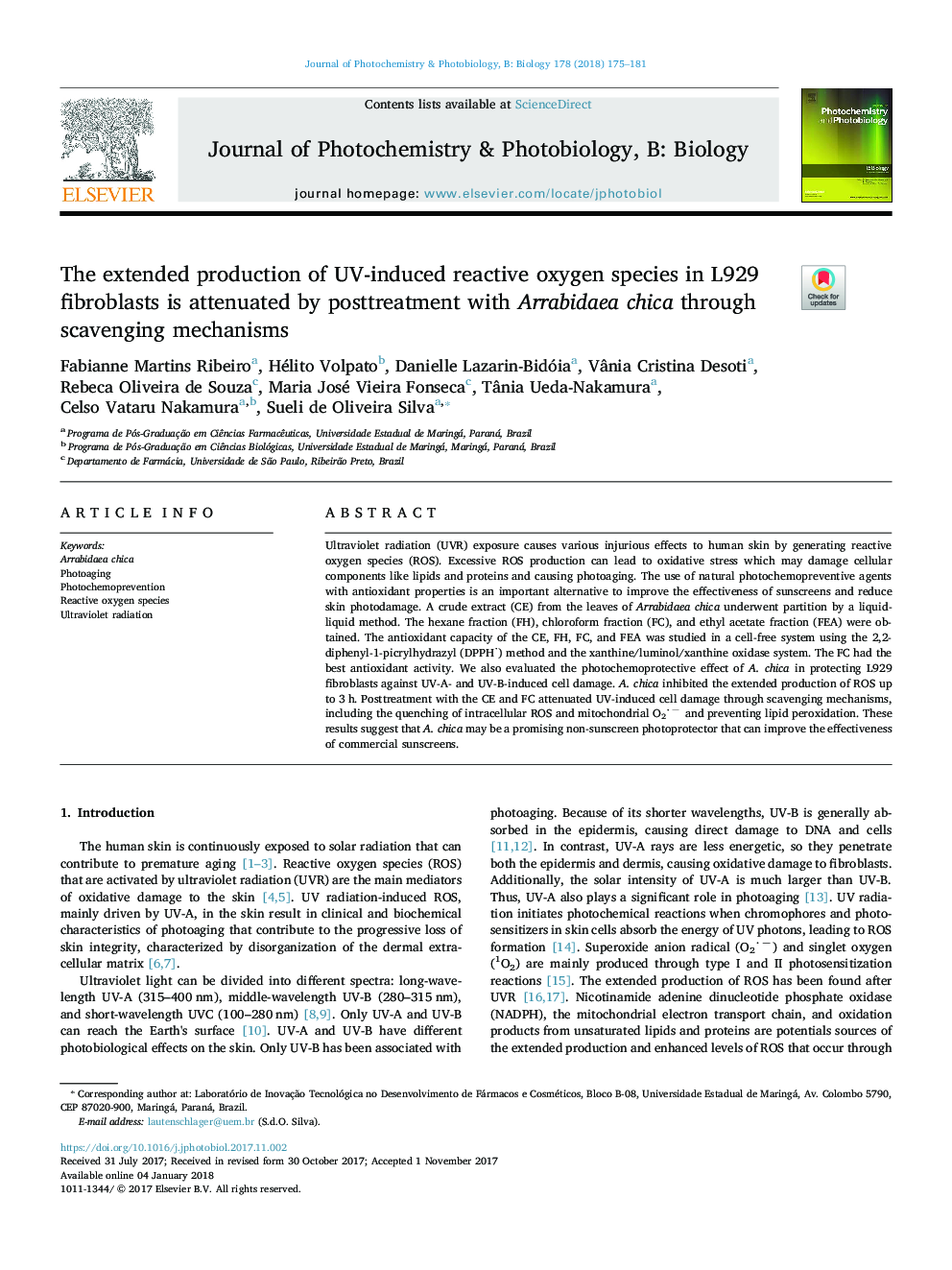| Article ID | Journal | Published Year | Pages | File Type |
|---|---|---|---|---|
| 6493416 | Journal of Photochemistry and Photobiology B: Biology | 2018 | 7 Pages |
Abstract
Ultraviolet radiation (UVR) exposure causes various injurious effects to human skin by generating reactive oxygen species (ROS). Excessive ROS production can lead to oxidative stress which may damage cellular components like lipids and proteins and causing photoaging. The use of natural photochemopreventive agents with antioxidant properties is an important alternative to improve the effectiveness of sunscreens and reduce skin photodamage. A crude extract (CE) from the leaves of Arrabidaea chica underwent partition by a liquid-liquid method. The hexane fraction (FH), chloroform fraction (FC), and ethyl acetate fraction (FEA) were obtained. The antioxidant capacity of the CE, FH, FC, and FEA was studied in a cell-free system using the 2,2-diphenyl-1-picrylhydrazyl (DPPH) method and the xanthine/luminol/xanthine oxidase system. The FC had the best antioxidant activity. We also evaluated the photochemoprotective effect of A. chica in protecting L929 fibroblasts against UV-A- and UV-B-induced cell damage. A. chica inhibited the extended production of ROS up to 3Â h. Posttreatment with the CE and FC attenuated UV-induced cell damage through scavenging mechanisms, including the quenching of intracellular ROS and mitochondrial O2â and preventing lipid peroxidation. These results suggest that A. chica may be a promising non-sunscreen photoprotector that can improve the effectiveness of commercial sunscreens.
Related Topics
Physical Sciences and Engineering
Chemical Engineering
Bioengineering
Authors
Fabianne Martins Ribeiro, Hélito Volpato, Danielle Lazarin-Bidóia, Vânia Cristina Desoti, Rebeca Oliveira de Souza, Maria José Vieira Fonseca, Tânia Ueda-Nakamura, Celso Vataru Nakamura, Sueli de Oliveira Silva,
